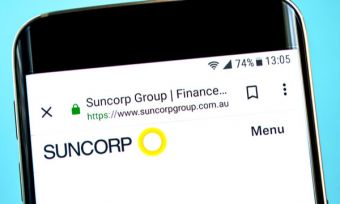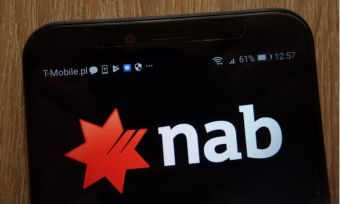Buy now pay later (BNPL) has taken the market by storm, and it’s attracting big names including CommBank and PayPal. With a growing number of providers to pick from, how do you know which is right for you? We explain what to look for.
Buy now pay later (BNPL) has attracted plenty of attention in recent years thanks to its stellar rise in popularity. Just four years ago, only around $1.5 billion worth of purchases were made using BNPL. By 2020 that figure jumped to more than $9 billion.
Much of BNPL’s appeal lies in the way it works. Shoppers take the purchases home today, and pay them off in a series of instalments. As long as you don’t fall behind with payments, no late fees or interest charges apply.
There is however an indirect cost to shoppers. BNPL providers make the bulk of their money by charging retailers a fee. This typically works out to between 3% and 6% of BNPL sales, a cost that’s likely to be passed on to consumers.
The potential for late fees
BNPL providers don’t come under the National Credit Code in the way that credit card providers do. This means they don’t have to follow responsible lending regulations. However, earlier this year a self-regulatory code of conduct was introduced that calls on BNPL providers to complete credit checks for purchases above $2,000, and more in-depth checks for transactions above $15,000.
This follows an investigation by money watchdog ASIC that found one in five BNPL users are missing payments. That’s when late fees can apply, and the cost can quickly stack up.
As a guide to the scale of late payments, in 2018-19 missed payment fees totalled over $43 million, an increase of 38% on the previous financial year. For market leader Afterpay, late fees comprised 20% of the company’s 2018/19 revenue.
The latest newcomer to BNPL – PayPal, is bucking the trend of late payments. Its BNPL option – Pay in 4 – comes with zero interest, no late payment fees and no sign-up fees.
Nonetheless, the potential to fork out late fees makes it important to understand how transactions are required to be paid off, and whether you can realistically avoid additional charges that add to the cost of purchases.
What’s involved
The table below looks at what’s involved with six BNPL providers. Most require purchases to be paid off in four instalments. The exception is Humm, which allows purchases below $2,000 to be paid off in five months or less. These are all reasonable timeframes, but think about whether the pay-off period coincides with other major household expenses, such as car rego or an electricity bill, which could leave you tight for cash.
It’s also important to be aware of how much you’ll pay in late fees and when they apply. There can be big variations in the cost, ranging from $15 with Klarna to $5 with Zip Pay.
The grace period to make good on a late payment differs too. Fall behind for a week with Afterpay, and along with the initial late payment fee of $10, you’ll be slugged a further $7. Zip Pay allows a more generous 21 days before a late fee applies. As noted earlier, PayPal’s Pay in 4 has zero late payment penalty.
Compared: Afterpay, Zip Pay, Klarna, PayPal Pay in 4, Humm
← Mobile/tablet users, scroll sideways to view full table →
| Afterpay | Zip Pay | Humm | Klarna | PayPal Pay In 4 |
Commbank StepPay |
|
|---|---|---|---|---|---|---|
| Pay in 4 instalments over 6 weeks (first payment at time of purchase) |
Pay min of $10 per week ($40 per month) |
For <$2k, pay weekly or fortnightly over 5 months or less |
Pay in 4 instalments (first payment when merchant confirms your order – usually shipping date) |
Pay in 4 instalments over 6 weeks (first payment at time of purchase). |
Pay in 4 equal fortnightly payments for eligible Commbank customers |
|
| Payment Frequency Options |
fortnightly | weekly, fortnightly or monthly |
weekly or fortnightly |
fortnightly | fortnightly | fortnightly |
| Miss one payment |
$10 (+$7 if remains unpaid 7 days later) |
$5 (charged 21 days after due date if payment is not made prior) |
$6 | $15 (given 2 to 7 business days “slack period” to make payment) |
$0 | $10 |
| Ongoing Fees |
$0 | $0 or $6 per month if balance is unpaid by the end of the month* |
$0 or $8 per month for payment plans 5 mths or longer^ |
$0 | $0 | $0 |
| Spending Limit |
from $500, increasing gradually based on good spending behaviour |
$250 to $1,000 | “Little things” payment plan – up to $2,000 |
$10 minimum spend for individual purchases total spending limit varies based on history of successful repayment |
eligible purchases ranging from $30 to $1,500 |
up to $1,000 |
Source: www.canstar.com.au. Prepared on 12/07/2021. Fees and/or payment terms based on a single purchase amounting to $500. *Balance due for that month is for purchases made in the preceding month. ^Only a single monthly fee will be charged regardless of the number of active payment plans. See providers for full details on eligibility, terms and conditions.
The bigger the purchase the more care is required
It may sound easy to avoid late fees. But a lot can hinge on how much you spend. In 2018/19, the average transaction using Afterpay was just $147. This rises to almost $2,700 for both BrightPay and Payright. With Humm, which offers a maximum BNPL transaction of $30,000, the average purchase was $8,222. The bigger your purchase, the more confident you need to be about paying it off in the required timeframe.
How providers stack up on a $150 BNPL purchase if you miss a payment
To see how providers compare, Canstar crunched the numbers on a hypothetical BNPL purchase of $150. Across the BNPL providers we considered, there are zero additional costs if you pay on time.
If our shopper misses one payment, late fees apply ranging from $0 with PayPal’s Pay in 4 to $10 with Afterpay and Commonwealth Bank’s StepPay. We’ve assumed our shopper catches up with the payment in time to avoid an additional penalty as would be the case with Afterpay.
Across the BNPL providers in the table below, the total cost of the purchase with one late payment runs from $150 with PayPal Pay in 4 (no extra fee) to $160 with Afterpay and CommBank StepPay.
We have also shown the cost of the late fee as a percentage of the purchase value. The smaller the purchase the more important the late fee becomes.
The cost of missing one payment on a $150 purchase
| Afterpay | Zip Pay | Humm | Klarna | PayPal Pay In 4 |
CommBank StepPay |
|
|---|---|---|---|---|---|---|
| Cost (if pay on time) | $150 | $150 | $150 | $150 | $150 | $150 |
| Late Fee | $10* | $5** | $6 | $7*** | $0 | $10 |
| Cost (if 1 payment late) | $160 | $155 | $156 | $157 | $150 | $160 |
| Cost as Percent of Purchase Value (if 1 payment late) |
6.67% | 3.33% | 4.00% | 4.67% | 0.00% | 6.67% |
Source: www.canstar.com.au. Details correct as of 12/07/2021. Late fees based on a purchase amount of $150. *An additional $7 applies if payment remains unpaid 7 days after due date. **Given 21 days to make payment before fee is charged. ***Given 2-7 days ‘slack’ period to make payment. ‘Cost if one payment late’ includes a single charge of one late payment fee and does not include any ongoing fees that may be applicable. See providers for full details on eligibility, terms and conditions.
The verdict
ASIC has acknowledged that BNPL is working for the majority of users. And if you select the provider whose payment terms best match your personal cash flow in regards to when you’re paid and when other bills fall due, BNPL can be a low-cost way to pay for purchases.
That said, it does call for self-discipline. The danger area can lie if you use more than one BNPL provider, which is the case for just more than half (55%) of BNPL shoppers, or if you’re juggling multiple purchases at one time.
Afterpay has plans to launch a new app in October, which will display a consumer’s BNPL balance and instalments alongside their daily spending account and savings accounts, providing a single view of their finances – something Afterpay believes will “help customers trust themselves with money management”. It’s a step in the right direction, as is PayPal’s Pay in 4 option, which makes it easier to use BNPL without racking up unwanted charges.
However, neither overcomes a key potential pitfall of BNPL – the temptation to overspend. Afterpay, for instance, promotes its service to merchants saying it increases the “average order value by up to 40%”. That’s great for retailers. It’s not so good for shoppers who can find themselves in deep financial hot water by loading up with purchases they’ll struggle to pay off.
Cover image source: Inna Kot/Shutterstock.com
 About Nicola Field
About Nicola Field
Nicola Field is a personal finance writer with nearly two decades of industry experience. A former chartered accountant with a Master of Education degree, Nicola has contributed to several popular magazines including the Australian Women’s Weekly, Money and Real Living. She has authored several best-selling family-focused finance books including Baby or Bust (Wiley) and Investing in Your Child’s Future (Wiley).
This content was reviewed by Editor-in-Chief Nina Tovey as part of our fact-checking process.


 About
About 




Share this article